On July 17th, 1955, Walt Disney welcomed the world into his very own realized fantasy: Disneyland. This magnum opus of work would be the amalgamation of creativity and innovative engineering, creating what we now know as the happiest place on earth. But just how true is that claim to endless joy being found in the now numerous Disney parks around the world?
Let's uncover some of the murky secrets within these parks and explore some of the projects that never got their fairy tale ending. From planned volcanic rollercoasters to, attractions left to rot for surprisingly dark reasons, let's investigate some abandoned and unfinished Disney projects!
Imagineering
In order to understand Disney, we need to meet the people who made the craziest ideas for Disney parks possible. They call themselves the Imagineers. As Walt Disney embarked on his grand expedition of creating his initial park in Anaheim, California, he needed a way to make his technicolor whimsies a reality.
With the creativity of staff scouted from his own animation studio, plus the expertise of architects and engineers, he orchestrated a formidable team of Imagineers. Governed by passion and creativity, Walt and his Imagineers nurtured a free willing attitude of "if it can be dreamt, it can be built".Though, even with this formula, throughout the years it certainly hasn’t been plain sailing for the Imagineers. Some concepts would never see creation, while others, for one reason or another, would be axed further down the line sometimes, becoming completely desolated and fading into obscurity.
River Country
As Sebastian from The Little Mermaid once said, "It's better down where it’s wetter". Interpret that as you will, but we can all agree that there’s nothing more fun than a water park. And in the 1970s, the Imagineers had that idea in mind when they were designing Disney’s second park, Disneyworld Florida.
A debut for Disney parks,
River Country would be a water park positioned right on the edge of Florida's Bay Lake. The park was designed as a recreation of an old-fashioned swimming hole, with cultivated coves and waterfalls. With something for everyone, River Country was a triumph.
In fact, with it being one of the earliest fully themed water parks in the world, it was considered revolutionary. However, by 2001, River Country’s charm had sorely faded and its days in the sun were over. That year, it was initially said to be closed for renovation, but it would never be reopened.
Embed for https://twitter.com/seph_lawless/status/1002974187143745536 could not be displayed
Besides, newer, bigger, and better water parks had since been built such as
Typhoon Lagoon in 1989 and
Blizzard Beach in 95. River Country was much like one of the forgotten toys in
Toy Story. The difference, though, was that this park’s abandonment may have been justified, thanks to some dark occurrences.The waters of River Country, it turned out, had actually claimed lives. In 1982, a 14-year-old boy sadly drowned in the park. Another again in 1989. But most unsettling was the 11-year-old boy who lost his life there in 1980.Being next to Bay Lake, the Imagineers created a system where fresh water could be filtered from the lake and pumped into the park. Only, on this fatal day, a microscopic amoeba of the species Naegleria Fowleri, otherwise known as the brain-eating amoeba, somehow bypassed the filtering system. It swam up the boy’s nose, and attacked his brain and nervous system, eventually proving fatal.

While these unfortunate incidents weren’t given the blame for the park’s closure, they certainly contributed to an uneasy atmosphere there.
But as far as uneasy sights are concerned, it doesn’t get much more unnerving than how River Country looked after its closure. Up until 2018, the sight was left completely abandoned. What were once clear aqua waters, were now murky, moss-filled swamps. It became a thoroughly creepy place, lurking out of sight to unwitting Disneyworld parkgoers, with the degraded hints of Disney charm that once existed there only making it more unnerving by contrast.However, in 2018, Disney announced Reflections, a new, 900-room, lakeside lodge, to be built over the ruins of River Country. The water park's last remnants were demolished ahead of the new construction, which remains underway as of 2023. So, with no trace of this forgotten Disney park remaining, River Country now exists only within the realm of nostalgic, and possibly uneasy, memories of those who visited.
Beastly Kingdom
From the main mouse himself to evil cats and love-struck dogs, it’s no secret that Walt Disney took an interest in animals. In fact, when creating Disneyland in the 50s, he was keen to incorporate real animals, but circumstances didn’t initially allow for it. A handful of animals began to be seen in Disney resorts in the years that followed.
But it was in 1998, decades after Walt’s death, that his dream came to full fruition when Disneyworld unveiled
Animal Kingdom. For those of you versed in Disneyworld, you’ll know that Animal Kingdom houses not only real zoo animals but a section for animatronic dinosaurs or rather, Dino Land.
But, did you know the Imagineers originally conceptualized another section called
Beastly Kingdom? The realm of Beastly Kingdom would be home to all things mythical. Gallant unicorns and fearsome sea beasts would lurk on the land in animatronic form. But, looming over the kingdom would be a fire-breathing dragon in a tower, guarding its treasures.As guests entered the tower, they would be greeted by a gang of bats planning to raid the dragon’s riches. Whisked off in a thrilling rollercoaster ride, guests would whip around the treacherous towers with the bats, until finally encountering the dragon himself, who’d attempt to hurl his fire at them.
At the time, the dragon would've been the largest audio-animatronic the Imagineers had ever built but it wasn’t. Interestingly, remnants of Beastly Kingdom can still be seen today. For instance, there is still a dragon on Animal Kingdom’s logo. But why was this whimsical idea never seen through? You can blame this on
Michael Eisner, former chairman and CEO of Disney. It’s said that as the company embarked on the project, the reality of caring for animals exceeded budget expectations, and thus Dino Land and Beastly Kingdom were put on trial. Seeing as Disney was at the time working on the CGI blockbuster, Dinosaur, Eisner concluded that Dino Land made more sense from a business standpoint. And as only one of the two could be afforded, Beastly Kingdom was sadly slain.
Discovery Island
With visual secrets in most of their movies, from Nemo in Monsters Inc. to Rapunzel in Frozen, Disney is all about the hidden details. However, when it comes to their parks, there are some hidden details they’d rather fans not find. For example, Discovery island.
The spot launched in 1974, 3 years after Disneyworld opened. It was just a stone’s throw away from River Country and was built on a naturally formed island in Florida’s Bay Lake. Brimming with flora and fauna, Discovery Island showcased rare birds and wildlife.
Discovery Island 1986 @ Walt Disney World by Andrea’s Antics For 25 years, guests would arrive in their boatloads and be mesmerized by the natural wonders of Discovery Island. However, in 1999, Discovery Island mysteriously fell off the radar.
After falling from Disney’s catalog of attractions, the island was simply abandoned. Not demolished. Nor repurposed. Merely left to the elements. Over time, the once vibrant island faded into obscurity. Cages that were once homes for animals now resembled rotting asylum cells, and unidentified animals that might’ve once flocked to the island for home, now lie there as carcasses. Still abandoned to this day, no one is allowed to enter the island.However, in 2017, YouTuber Matt Sonswa managed to gain access, capturing the decrepit island on camera and providing the internet with some exclusive images. But how did Discovery Island become such a tragedy?
Disney's Forgotten Theme Park - Abandoned Discovery Island by MattSonswa Since its closure in 1999, Disney has never stated why Discovery Island was closed, though it’s believed it was due to poor attendance and high maintenance costs. Just a year before its closure, the aforementioned Animal Kingdom opened in the main park.With it being newer, bigger, and hosting a wider range of animals, Discovery Island’s attendance began to plummet. Soon, the island’s animals were relocated to Animal Kingdom.
Discovery Island was closed, deserted, and left to the elements, awaiting rediscovery by only the bravest of YouTubers.
Fire Mountain
Back in the 90s, Disney was riding high. From Aladdin to The Lion King, the studio was producing hit after hit. So much so, that the period between 1989 and 1999 is often referred to as "The Disney Renaissance"; a return to form after a period of poor-performing projects.
However, as the 90s drew to a close, Disney began to veer from the classic fairy tale formula that seemingly resurged its popularity during the 90s. The turn of the century would bring Disney a series of bold new movie ideas, many of which unfortunately proved to be commercial failures.
At the tail end of the 90s, the studio began working on
Atlantis: The Lost Empire. Sure that it would be a success, the Imagineers began conceptualizing an Atlantis-themed attraction for Disneyworld. Atlantis, however, was far from a success. Costing around $120 million to make, the movie only grossed $186 million during its entire theatrical run.That might not seem bad, but considering Lion King during its original theatrical run alone made $768 million on a $45 million budget, you can see why Atlantis was considered disappointing. The movie had already been a financial drain, and Disney’s subsequent lack of confidence would come to rob us of perhaps one of their coolest attractions ever:
Fire Mountain.
Perched in Disneyworld’s Magic Kingdom, Fire Mountain would’ve been a giant volcano with the characters of Atlantis featured setting up a base camp at the bottom. There isn’t a ton of information about the ride Fire Mountain would feature, but it was said to be a rollercoaster weaving its way around a volcano.Concept art suggests the ride would begin in a traditional seeming cart, but the track would twist from being below to above, rotating the pivoting cart into a hanging position, leaving guests feeling like they were flying. Beyond that, there aren’t many other details though we can only imagine what other illusions, thrills and lava spills the Imagineers had in store for us!
Villain Mountain
From their deranged cackles to their impeccable style, Disney villains are the guys we just love to hate. And while they’re vital to the narrative in most Disney movies, these wrongdoing ruffians aren’t always front and center in Disney parks. However, did you know that there were actually plans for an exclusively villain-themed ride?
In 1986,
Tokyo Disneyland opened Cinderella Castle Mystery Tour. Guests would embark on a seemingly innocent tour through Cinderella’s castle only, the tone would gradually shift, transforming the castle into the spooky lairs of various villains.
Noticing the success of this attraction, the Imagineers thought it was perhaps time they brought some wickedness to the western Disney parks. What they came up with was, "
VILLAIN MOUNTAIN".
Around this time the Imagineers were also developing the doomed Fire Mountain, so they decided they would differentiate Villain Mountain by not having it be a rollercoaster, but instead a flume-based ride, more akin to Splash Mountain, but spooky! Guests would glide in ghoulish gondolas, adorned with skulls, similar to Hades’ in Hercules.After a grueling voyage through the various lairs, guests would be confronted with the most malevolent of all: Chernabog from Fantasia. Unfurling his huge wings, Chernabog would menace the riders, all the while an entourage of fire demons frolicked around him. In all this terror, guests would suddenly plummet into a deep abyss below.

Unfortunately, very vague concepts were the only thing to ever materialize from this project, as for unknown reasons, the entire thing was scrapped. To this day, we’re yet to see an area fully dedicated to our favorite baddies. You might argue that could be due to the Disneyland ethos of being the happiest place on earth, but for the villain in all of us, it’s an idea that’d be pretty darn cool to see brought to life.
Mount Fuji Rollercoaster
In 1982, while folks strolled the streets listening to Eye of the Tiger on their Walkman, Disney was about to unveil another exciting edition to Disneyworld: The iconic Epcot. A fantasy that the late Walt had been dreaming about since the 60s, Epcot was a hub of technological innovations, science, and global culture.
With much to be entranced by, Epcot certainly isn’t short of attractions. However, there’s one ride that might have made it even better. The one that got away:
Mount Fuji Rollercoaster.The Epcot's World Showcase Pavilions celebrate various countries of the world, and each pavilion tends to be sponsored by a private company. For example, the American pavilion was funded by American Express and Coca-Cola. You don’t get much more American than that! However, it was this very sponsorship system that flung one of the Imagineers’ ideas to the cutting room floor.Ahead of Epcot’s opening, the Imagineers were creating concepts for the Japan pavilion. There was one Japanese icon they had their sights set on: Mount Fuji. Not just a small replica of the mountain, but a thrilling rollercoaster that would rapidly navigate the precarious peaks.
There was just one problem: Kodak. While they weren’t actually the sponsor behind the Japanese Pavilion, they were a major sponsor behind the Imagination Pavilion in Epcot. It’s believed that Fujifilm, the arch-rival competitor of Kodak, was in the running fittingly to sponsor the Mount Fuji exhibit.
However, given that Kodak was a major Disney sponsor, they likely objected to a Disney partnership with their fierce rivals at Fujifilm, so the funding for the ambitious project couldn’t be secured. Instead, Japanese department store chain Mitsukoshi sponsored the Japan pavilion, for a lesser sum, resulting in the still impressive, but notably Mount Fuji-less pavilion.
The Enchanted Snow Palace
With Frozen grossing a staggering $1.28 billion, and its 2019 sequel an even bigger $1.45 billion, Frozen is, without a doubt, the animation studio’s most successful franchise. Adapted from Hans Christian Andersen’s The Snow Queen, the studio has had a surprisingly long history with this classic tale.
Walt was toying with the idea of a Snow Queen movie in 1936 and there was a Snow Queen-themed Disneyland attraction concept during the 70s. Embellished with artificial icicles and heaps of snow, The Enchanted Snow Palace would’ve delivered guests into a frozen wonderland.Whimsical creatures would, along the way, reveal themselves, such as the Three Snowballs, who were little animatronic, horn-tootin’ men. Penguins and polar bears would skate, and even the Snow Queen herself would gallop the glacial kingdom atop her majestic unicorn. But, even with all this stunning concept art, the idea was ultimately shelved.
It’s rumored that at the time the company decided to prioritize the pending Epcot project, so when deliberating the Enchanted Snow Place, they decided to put a hold on the project. Little did they know that 40 years later, the story of The Snow Queen would become a multi-billion dollar global phenomenon. And indeed,
Frozen Land is planned to come to Disneyland Paris in the next few years and the World of Frozen in Hong Kong is under construction. So, after 40 years, perhaps some of those original snow palace plans can finally be brought out.
Drone Video: Construction Update From World of Frozen | Hong Kong Disneyland by Disney Parks Disneyland Singapore
Since opening the first Disneyland in 1955, Disney has slowly worked towards expansion. And during the 90s, Singapore was looking for a way to bring more money into the country. And what better than the cash cow that was Disneyland?
It all began in 1985 when Singapore Airlines enlisted the help of an American economics consultancy to come up with a concept to boost Singapore’s tourism industry. It was decided theme parks, hotels, fast food, and shopping outlets were the key to success, and the campaign’s construction would be concentrated in an area they would call the Singapore Entertainment Center.

However, in 1994, despite almost a decade of development, the entire project was shelved, as Singapore’s authorities weren’t satisfied with the bidding submissions. At the time, Singapore was the world’s topmost consumer of Disney products on a per capita basis, so building a park there was pretty much a guaranteed success for both sides.Only, in the wake of a financially disappointing launch of Euro Disney in Paris in 1992, Disney was being a cheapskate. They wanted to pay an unfeasibly low cost for a huge 300 hectares of land and also wanted the Singapore government to foot much of the construction bill. It was a no-deal.
For Disney though, there were plenty more fish in the sea, and they soon shifted their gaze to Hong Kong. Unlike Singapore, Hong Kong was more than willing to foot the bill and paid a massive 3-quarter of the initial $3 billion construction, and Disneyland Hong Kong opened in 2005.
Not much is known about what
Disneyland Singapore might’ve looked like, though we can only assume it would’ve been quite similar to its Hong Kong replacement. But as early as the 1960s, Asia already had a Disneyland of its own that looked very different, and for good reason, as you’ll soon find out.
Nara Dreamland
In 1983, 18 years after the very first Disneyland opened in California, Japan got its own Disneyland, the very first to be built outside the States. But, long before Disneyland Tokyo, Japan already had a Disneyland. Or, at least, a legally distinct entity that kind of looked like Disneyland.
On July 1st, 1961, Japanese supermarket company, Daiei, unveiled
Nara Dreamland; a new theme park heavily inspired by Disney’s own. So much so, not only did it have its own rendition of a princess castle, but other icons such as Main Street and the railroad.
Nara Dreamland even had its own rendition of Mickey Mouse and other Disney character mascots. There were Ran Chan and Dori Chan, AKA, two child characters dressed as beefeater guards. The Disney knock-off was extremely popular at the time, with around 1.7 million visitors a year. After all, it was the closest thing Asia had to Disneyland without taking a 10-hour flight. But, sadly for Nara Dreamland, in the late 70s, Disney began plans to open a Tokyo resort. And, in 1983, Tokyo got a real, authentic Disneyland. Unsurprisingly, over at Nara Dreamland, attendance began to decline, and by 2001, the millions of annual visitors reduced to just 400,000. In the coming years, facilities began to close, and attractions rusted until finally, in 2006, the park was closed for good.
What at one time was vibrant and magical, declined into a vandalized and dilapidated kingdom. By 2014, this is what the abandoned site looked like:
Nara Dreamland: Abandoned Theme Park - Japan by hushhushvideo Finally, between 2016 and 2017, the ruined park was demolished entirely, meaning that Dreamland is now merely a dream of the past.
However, Nara Dreamland isn’t the only Asian Disneyland knockoff to have ever existed. As we’ve seen, during the 90s Disney were at the top of their game, movie-wise, at least. And a Thailand-based Chinese property development company called Reignwood Group wanted to get in on this success. But they weren’t looking to invest in Disney or anything. They were about to plagiarize Disneyland. They called their theme park,
Wonderland, and with towered castles and spired roofs, it was pretty clear they were drawing pretty heavily from decades of Imagineering to create a counterfeit Disneyland.
But, like Japan’s Nara Dreamland, this counterfeit park was doomed to fail. In 1998, Wonderland’s construction mysteriously stopped, leaving the half-built castle only a shell, standing alongside a few unfurnished buildings. But how did a promising knock-off of the happiest place on Earth become a sad, dilapidated ghost town?
At the time, local lore conjured up a tale claiming that the builders refused to work at the site, due to it being built on a haunted ancient burial ground. And as eerie as that sounds, it is, shockingly, not the case. The boring truth is that the company simply ran out of money midway through and couldn’t afford to complete Wonderland. In the following years, local farmers would attempt to reclaim the derelict land, growing crops and raising livestock amongst the disheveled kingdom. Eventually, the site was completely demolished in 2013, making way for a shopping mall. So, essentially the complete opposite of the happiest place on Earth.
Darkest Disneylands
Disney is all about dreaming with your heart and wishing upon a star. Believing that magic truly can happen if you just believe! The street artist known as Banksy, however, would never be so naïve, as evidenced in his 2015 art installation, "Dismaland".
Known for creating thought-provoking and oftentimes political artworks, Banksy’s Dismaland installation was a cynical satire of Walt Disney’s whimsical theme parks. Responding to the ideas of manufactured happiness, wide-reaching cultural dominance, and relentless consumerism, alongside some of the other less savory aspects of Disney’s past and present, the artist himself described Dismaland as a theme park for the disenfranchised.Located in Weston Super Mare, UK, the temporary park showcased Disney like you’ve never seen. From the rotting carcass of Sleeping Beauty’s castle and an overturned Cinderella’s carriage with paparazzi poised to capture the celebrity accident, to balloons that read "I am an imbecile", Dismaland was described as a family theme park unsuitable for children.

It was a pretty ingenious and ruthless parody of one of our planet’s most powerful cultural forces. To say the least, it’s a teaspoon of salt to balance out all the Disneyfied sweetness we’ve learned so far.
Unfortunately, this exhibition only ran from August to September 2015 and therefore no longer exists. However, the deteriorated castle gives us a glimpse of what could be if the mouse house does one day go defunct, a concept that’s also been explored in the artwork of
DeviantArt creator Michael Feeney.In his eerie photoshops, Feeney imagines what Disneyland might look like, should a Zombie invasion wipe out all of humanity. The result is a castle truly worthy of a Disney villain’s lair, among countless other dilapidated sights.
Michael Feeney isn’t the only artist to imagine such a situation either.
Filip Hodas' 3D art also explores Disney parks in post-apocalyptic ruin. From a dismembered Olaf to a giant, rusting Mickey's head, Hodas’ world is truly the saddest place on Earth.
These artistic renditions could fit in perfectly at the Disney locations that actually have been abandoned, like Discovery Island and River Country. But, realistically, those currently run-down real-world Disney sites will eventually be rebuilt, repurposed, and revitalized. And being in that state of change is a central principle of Disney parks.Walt himself once explained that "Disneyland will never be completed - it will continue to grow as long as there is imagination left in the world". And it’s this constant evolution that allows us to look back through the lens of grainy old cameras and see what, for many families, was, and is, the happiest place on Earth.
If you enjoyed this Disney ride, you might want to read about the
scariest Pixar movie theories and the
scariest Disney movie theories. Thanks for reading!






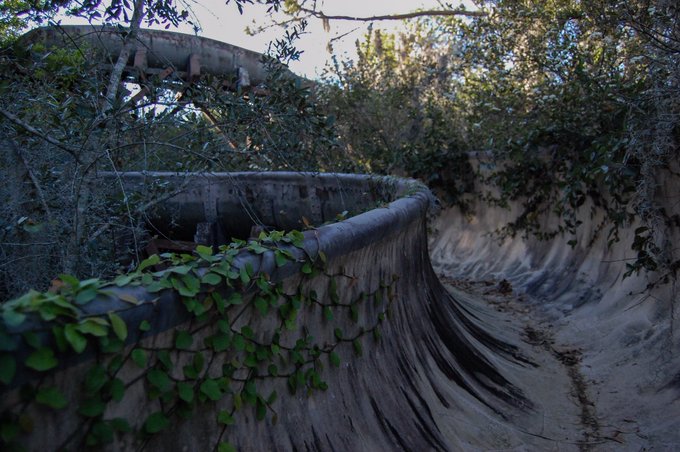
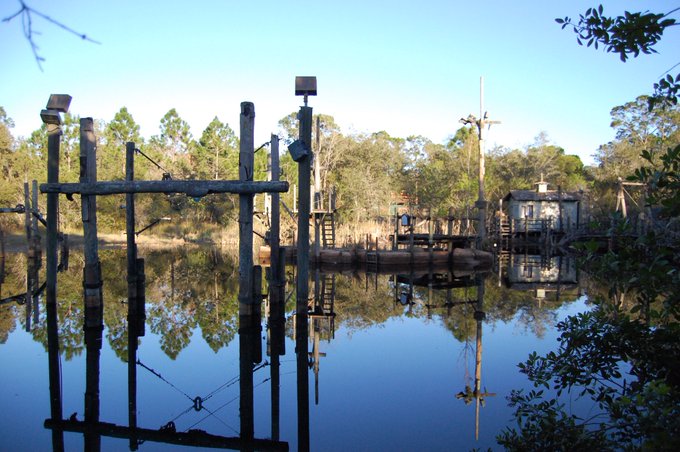

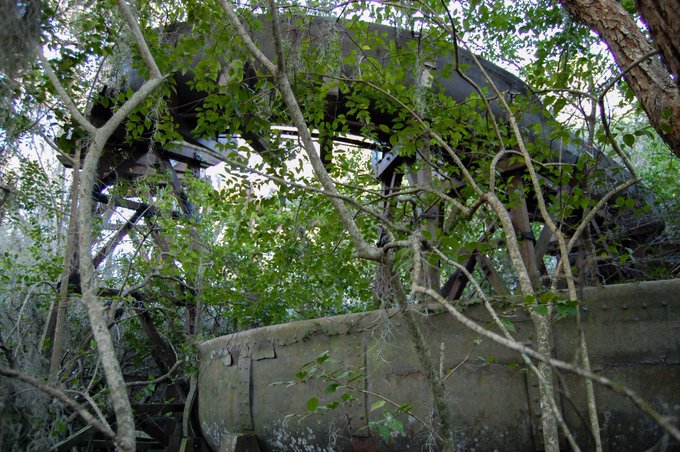

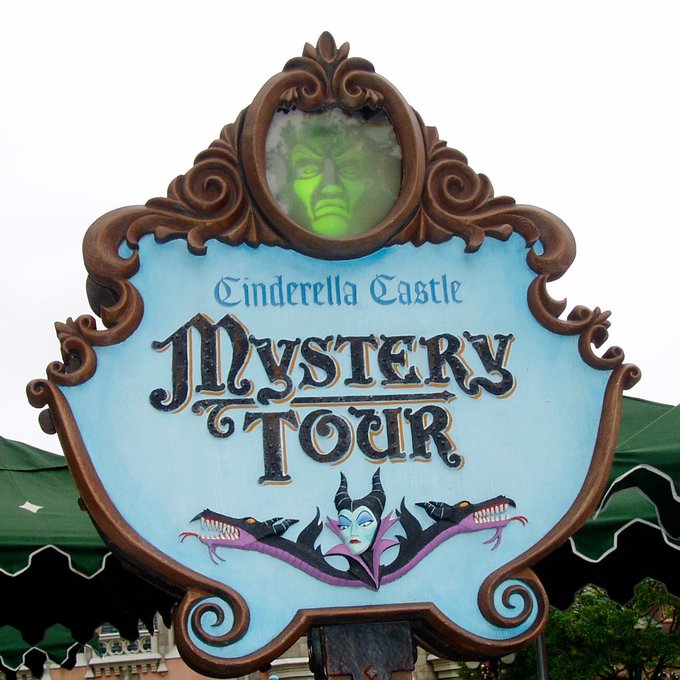
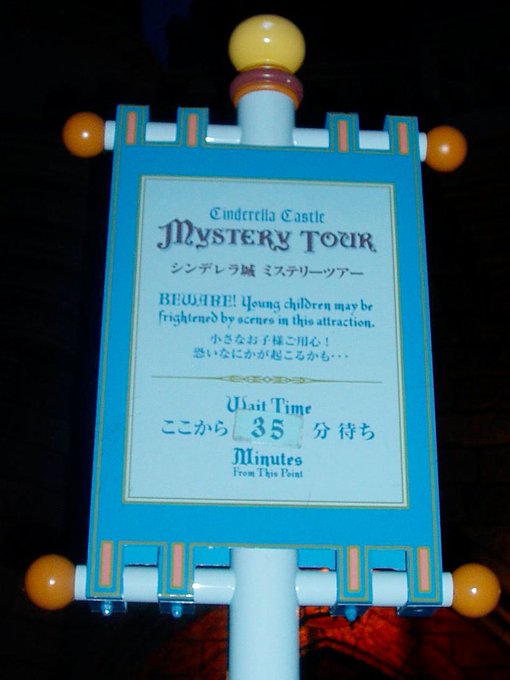
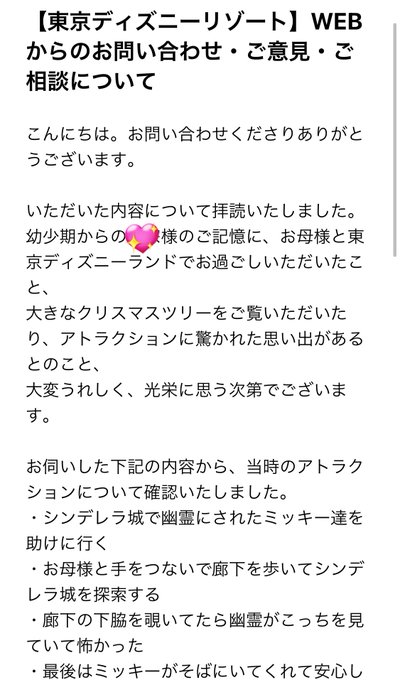
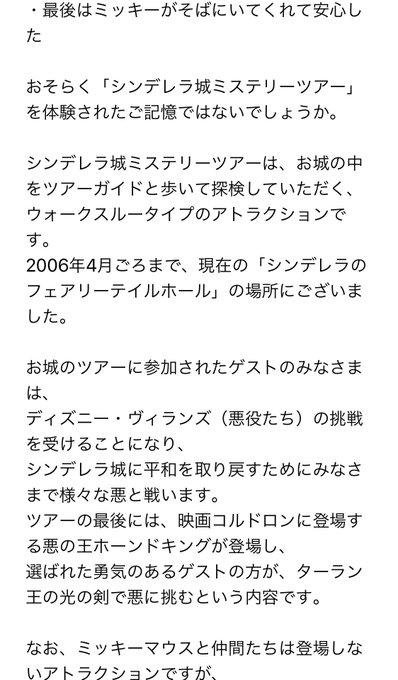
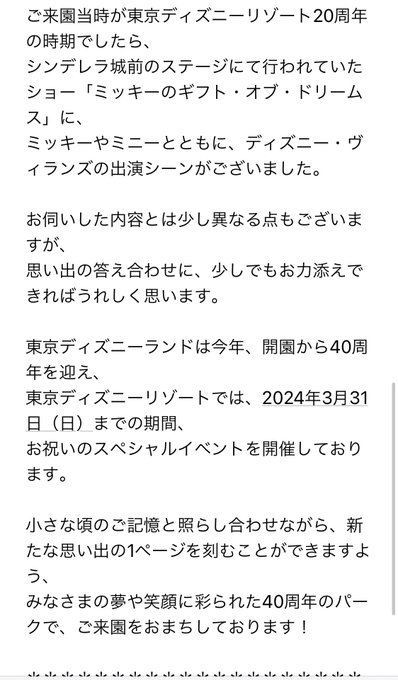















![Embarrassingly Dumb Ways People Died - Darwin Awards Winners [Part 9]](https://beamazed.b-cdn.net/dfhvoxjgb/image/upload/v1738778618/Embarrassingly_Dumb_Ways_People_Died_-_Darwin_Awards_Winners_Part_9_eukedp.jpg?width=400)






